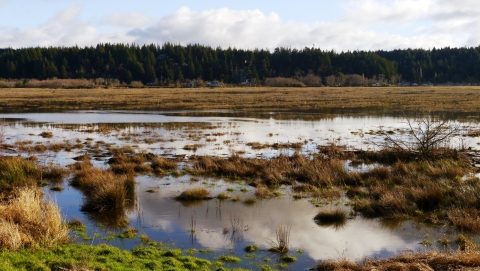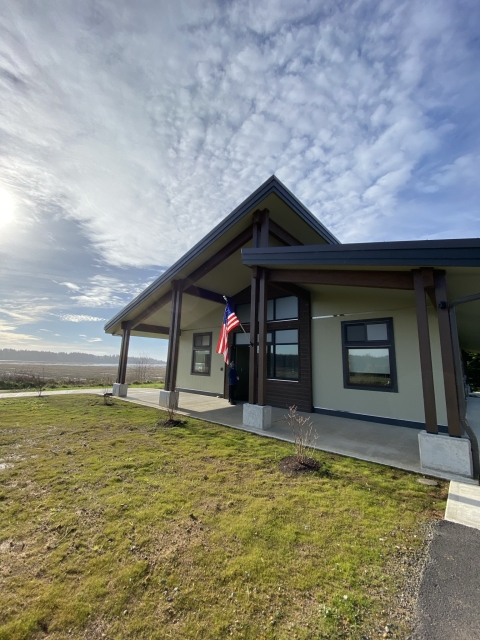Visit Us
Wildlife can be seen year-round at Bandon Marsh National Wildlife Refuge, from migrating shorebirds to resident songbirds, land mammals to marine mammals, and other amphibious life, there's something for everyone. The refuge offers hunting and fishing opportunities as well as two public trails and viewing platforms to take in the landscape.
Location and Contact Information
About Us
Established in 1983, Bandon Marsh Refuge is located along the picturesque southern Oregon coast near the mouth of the Coquille River and the city of Bandon. Its invertebrate-laden mudflats fuel the migration of tens of thousands of shorebirds every spring and fall, making it an essential stopover site. Young salmon and trout find sanctuary in the estuary's steep-banked tidal channels and anchored driftwood. The refuge consists of Bandon Marsh, Ni-les'tun Marsh, and the Myrtlewood Grove Nature Trail.
What We Do
The U.S. Fish and Wildlife Service conserves and monitors plants and wildlife, manages and restores habitat, and provides outdoor recreation for the public at the nation’s more than 550 National Wildlife Refuges.
Our Organization
Our Species
Shallow open waters, salt marsh salt marsh
Salt marshes are found in tidal areas near the coast, where freshwater mixes with saltwater.
Learn more about salt marsh , mudflats, sandy beaches, sea grass beds and sheltered channels form the complex tapestry of habitats characteristic of estuaries, where rivers meet and mingle with the sea. Though protected from the full force of the ocean’s pounding waves and buffeting winds, estuarine plants and animals must deal with the rigors of exposure, submersion, and fluctuation in salinity with each tidal cycle.
Get Involved
From its start in 1903, the National Wildlife Refuge System has owed its very existence to concerned citizens eager to protect America's natural resources. At Bandon Marsh NWR, one of the easiest ways to get involved is to help in our pollinator garden.
Projects and Research
To help plants and wildlife, Oregon Coastal Refuge Complex staff uses a variety of habitat management techniques to maintain, recover or enhance plant and wildlife values. Refuge staff carefully considers all management techniques, employing those best-fit to the situation at hand. The varied approaches Refuge staff take to benefit wildlife is commensurate with the array of species and habitats they're charged with protecting.






